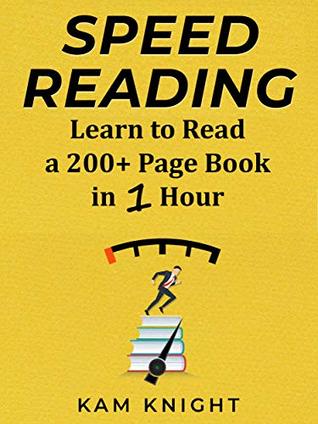More on this book
Community
Kindle Notes & Highlights
by
Kam Knight
Read between
February 17 - February 18, 2024
Reading is something that humans created, and since it is human-made, it is not an instinctual skill that we are born to do. It is a skill that must be learned.
The two most important days in your life are the day you are born and the day you find out why—Mark Twain.
Since purpose has such power, anytime you sit down to read, set a goal or purpose. Determine beforehand what you want or hope to gain from the material.
Clarifying your purpose helps the mind tremendously.
if you want your mind to know and pursue your goals and intentions, you must identify and clearly state them.
The key is to determine why you are reading the text or what you want to know once finished.
What can I get out of this material or How will reading it help me?
Another option is to ask yourself specific questions that you’d like the material to answer.
suggestions for different purposes
I am reading this book to learn money-saving strategies to grow my business.
My goal for reading this manual is to improve my computer programming skills for the new project at work.
The purpose of reading for the next few hours is to unwind, relax, and get lost in the author’s tale.
preview material before reading it. That means scrolling through the text, scanning the table of contents, major headings, any words in bold or italics, visual aids, and any information that seems relevant.
Preview is one of the most valuable steps readers can take to improve reading speed and comprehension.
One reason is that the mind doesn’t necessarily respond to what is happening in real-time, but to what it thinks is going to happen. In other words, the mind is constantly making predictions about the future.
because the mind is perpetually preparing for the unexpected—such as a predator jumping out at you. If you can react to a danger before it happens, you are likely to survive it.
Skilled readers almost never read a text cold. Instead, they examine it first with preview. The practice allows them to begin with a great deal of information already processed. As a result, their mind is not guessing or worrying about what comes next. It can relax and concentrate on what is being read.
Articles and Reports Read the first and last paragraphs, examine
words in bold or italics, read any quoted texts, and glance at any illustrations.
Books and Manuals Read the front and back covers. Review the table of contents to get a feel for the organization, and notice if the book is divided into sections or parts. Read the chapter headings to get a sense of the topics that will be covered.
Next, read samples of the text. If there is a preface, begin there. Read also the entire introduction and conclusion. Finally, skim through the book and notice items in bold, italics, quotes, and any diagrams
or tables. While skimming, read the first and last paragraphs of each chapter.
To remember all this, the National Council of Teachers of English (NCTE) recommends the acronym T.H.I.E.V.E.S[14]: • Title • Headings • Introduction • Every word in bold, underline, quote, and italics • Visual Aids • End of Chapter Questions
• Summary/Conclusion
preview can help determine if the text will meet the goal or purpose you established
gather, you can decide if the material will contain the information or answers you seek.
Don’t assume that all works must be read in the same way or at the same speed.
Let’s start with technical manuals.
carefully chew and digest every line.
These documents are better read in their entirety and given full attention and focus. Similarly, it’s sensible to slow down if you have to teach the material to someone else.
When reading material related to an academic major or profession, there’s less need to be as careful, but careful enough to understand and retain the material fully.
With material read for pleasure, you can be relaxed. There is no need to rush, but at the same time, no need to go slow.
Something else worth considering is how long the information will remain relevant. If reading to find a solution to a problem that once solved has no further use, then there is no need to be so meticulous.
always spend extra time on information that sets the foundation for other things you will learn.
Some material requires changing pace
frequently.
learned three activities one should do before beginning any reading task: define purpose, preview, and change reading style.
Space Reading directs you to
avoid looking at the words you are reading, but rather at the spaces in between the words.
chunking
instead of looking at words one at a time, you glance at groups, or chunks, of words.
Chunking opens our line of sight to capture more words in a single glance. The eyes are not set on a single word of a sentence, but instead, on a block or “chunk” of words in that sentence.
Space Reading and chunking. Both work on the principle of softening the eye’s gaze and picking up multiple words in a single glance.
Subvocalization is the act of pronouncing every word you read.
The mind can’t say words as fast as it can see them, making it impossible to read faster than we talk
Removing Subvocalization
First and foremost, close your mouth when reading.
Read fast-enough so you cannot pronounce words or think about their sounds.
Humming works because it preoccupies the vocal cords, so that you can’t speak or whisper any words.
Humming is an effective way to control reading speed and pace.


